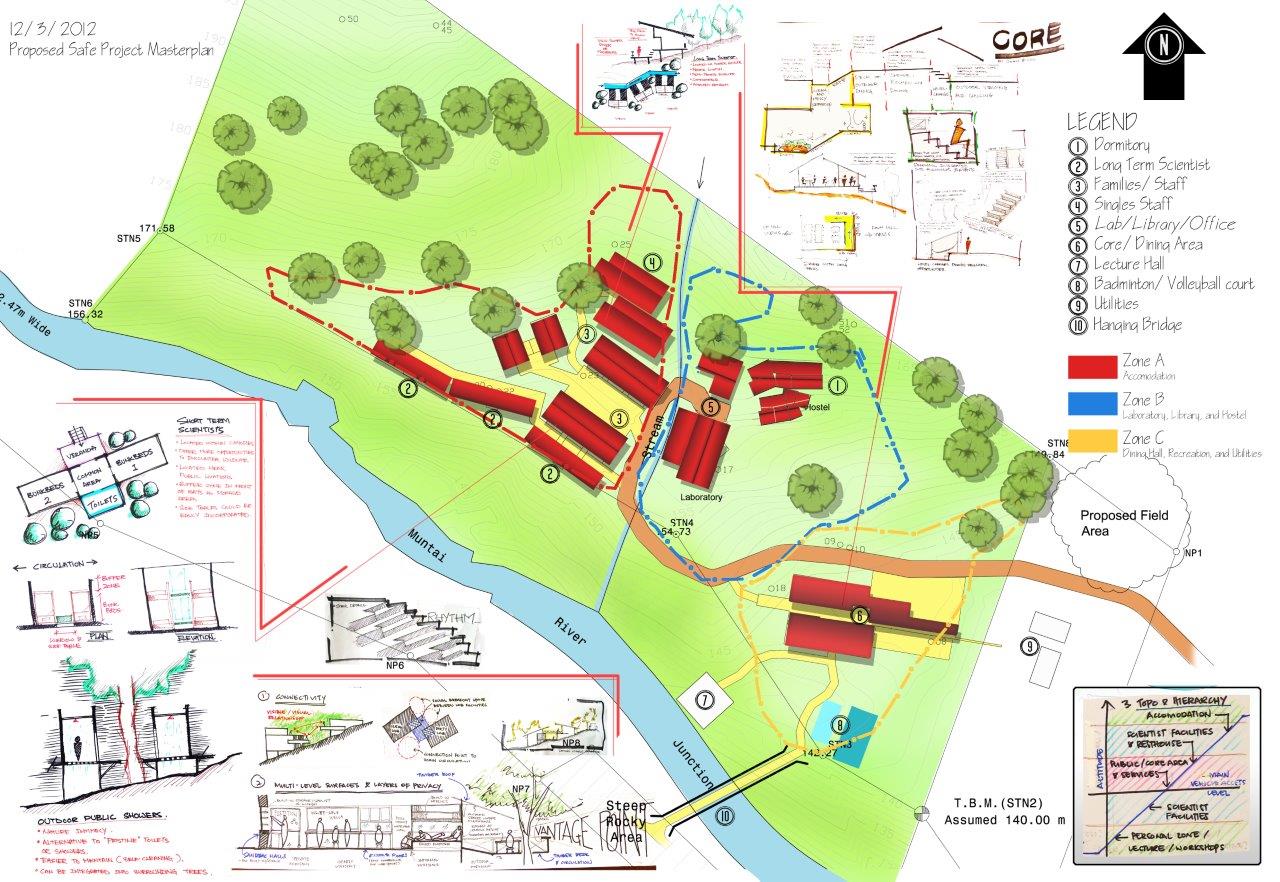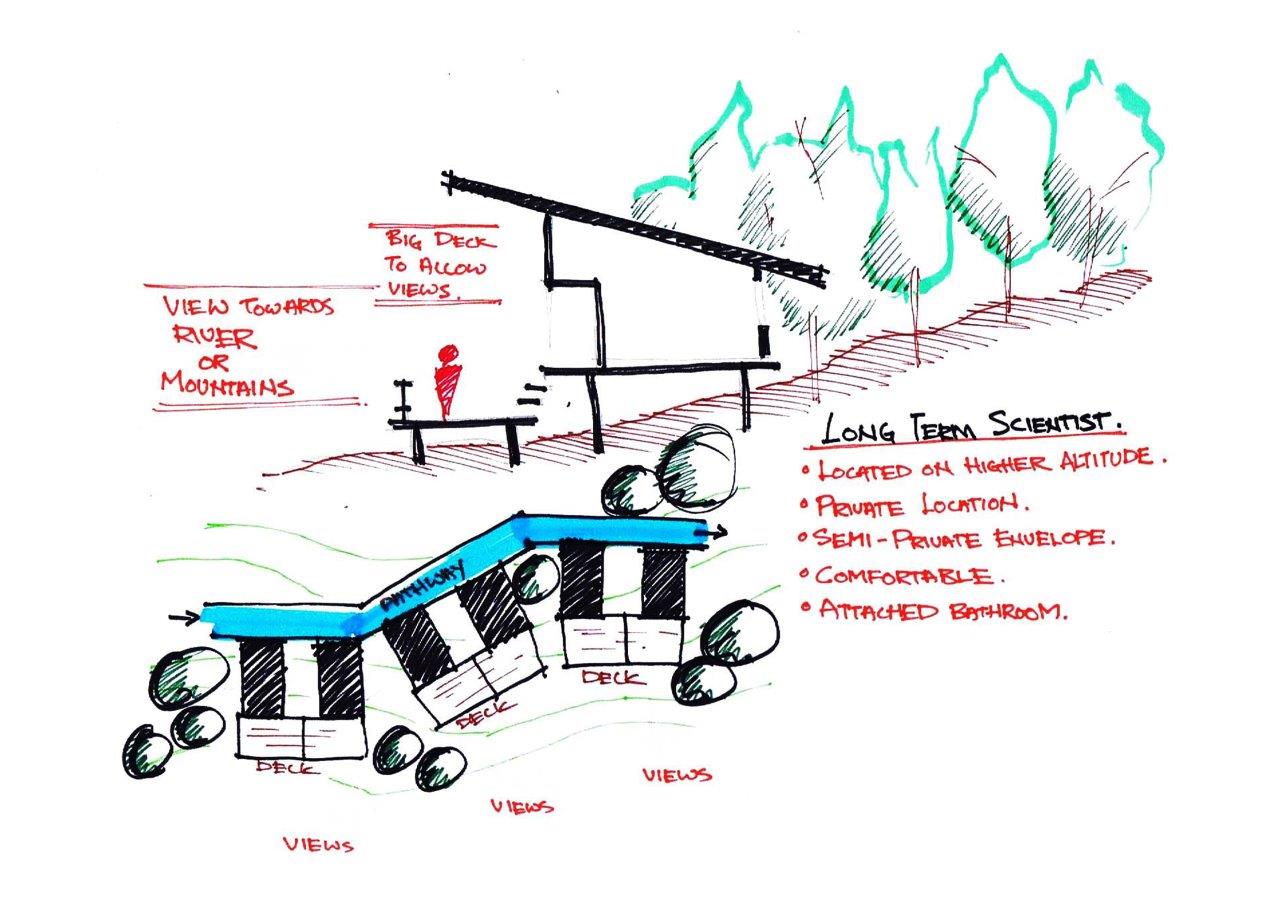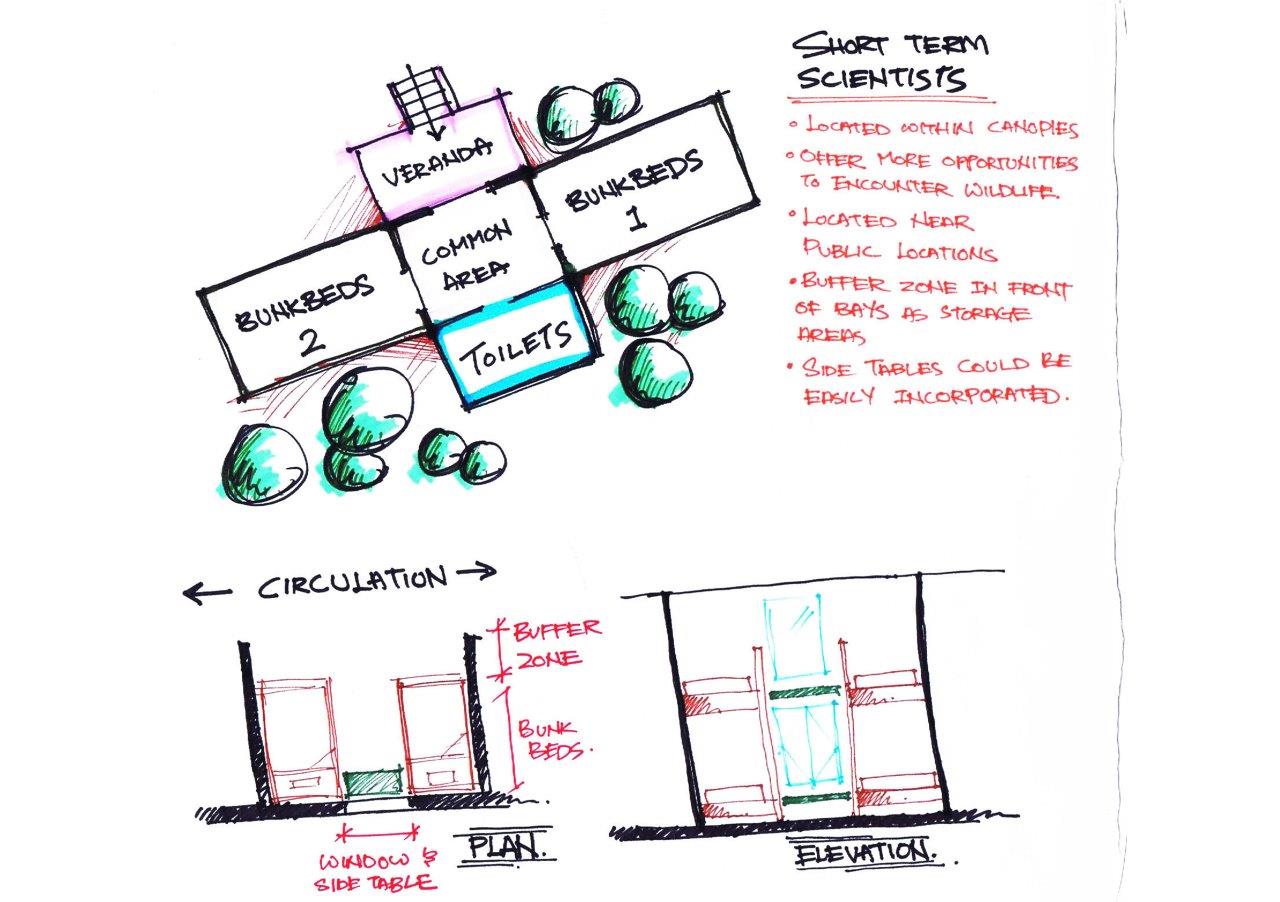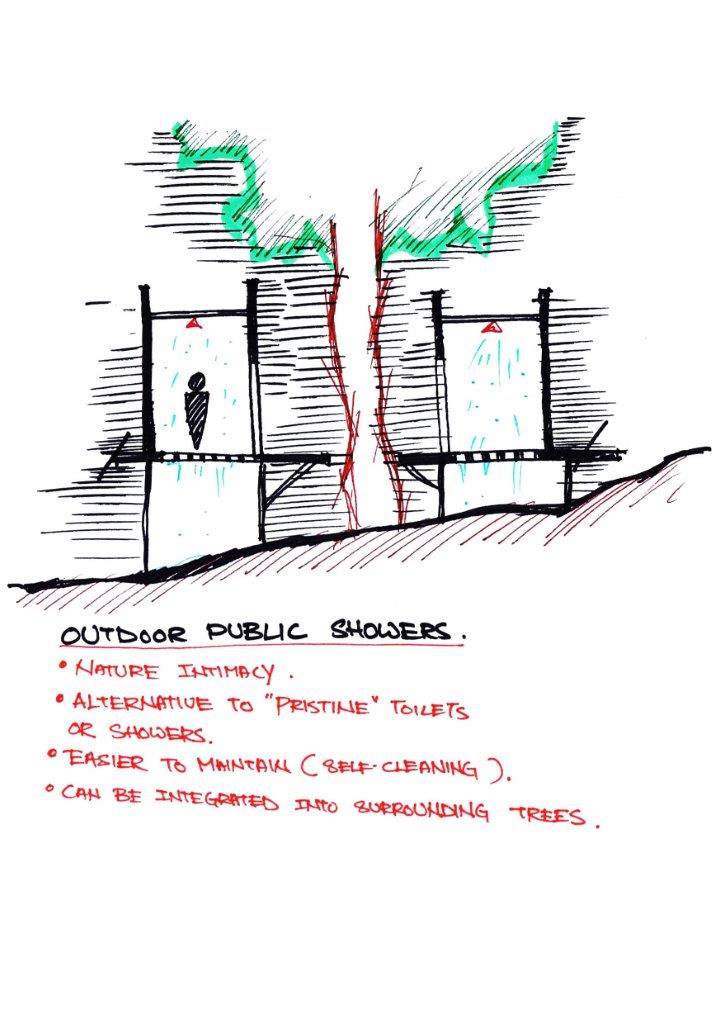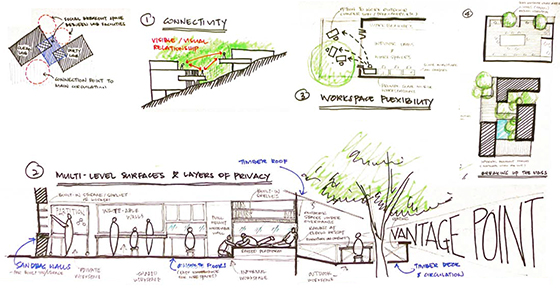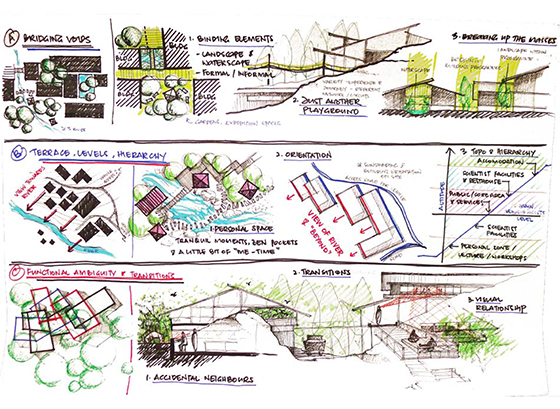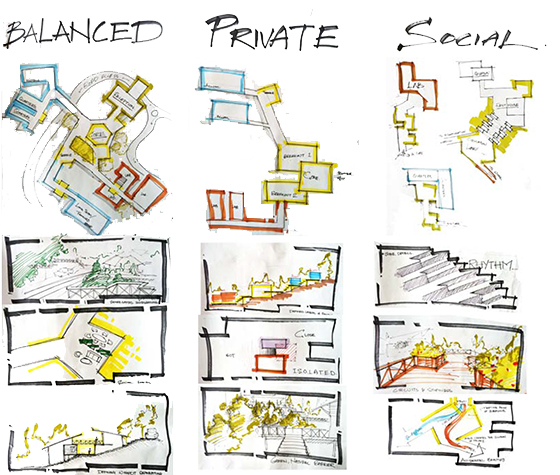SAFE Project – Masterplan
The SAFE Project is one of the world’s largest ecological experiments and aims to understand how the impacts of forest modification ramify through the web of life. The masterplan establishes a set of design principles for individual buildings, and for the relationship between buildings.
Opportunities for socialising and impromptu meetings are created throughout the masterplan. This has the intent to encourage interaction between researchers and research assistants. Separate buildings are designed around each other to create voids. These voids can in turn, be used to bind each space and building together. Hierarchy has been assigned to the project brief by designing in accordance to the existing slopes. Opportunities for interaction with nature have been created through spacial transitions with gradients, and in maintaining sightline connections, removing the need to have any physical connections.
When finished, the centre will provide accommodation for around 40 staff, 30 long-term researchers and up to 60 short-term visitors. There will be a wet and dry lab, providing flexible working and discussion space, and a library to house the Tim Whitmore collection and other important forest ecology references. There will also be dining and recreational facilities, and a variety of shared and private accommodation to suit the different lengths of stays made to the centre. All will be powered by as well as an off-grid, hybrid energy plant.
Project Data
Client: Rainforest Research Sdn Bhd
Status: Completed December 2012
Design Team: Daniel Cohen, , Sarah Greenlees, Alayna Kilkuskie, Chew Pui Cheng, Jonathan Livesey, Maria Kaskareli, Nic Lim, Ong Teen Nah.
The SAFE project encompasses an extensive gradient of land use intensity in the state of Sabah, Malaysia. The gradient includes old growth forest, logged forest and intensive agriculture, representing a progressive increase in the degree of forest modification. This experiment will leave behind six landscape blocks that will vary in the total amount of forest cover. This way, the effects of our modern fragmented landscape can be studies and planned for.
Client
Rainforest Research Sdn Bhd
Project Date
Completed December 2012
Category
Learning · Masterplan · Nature

